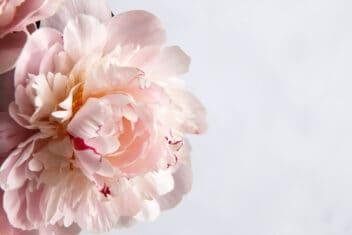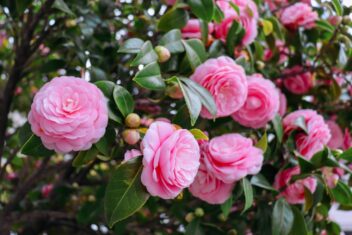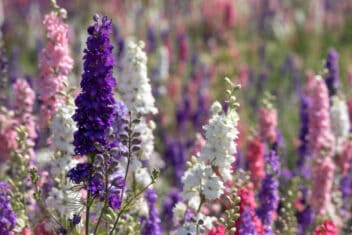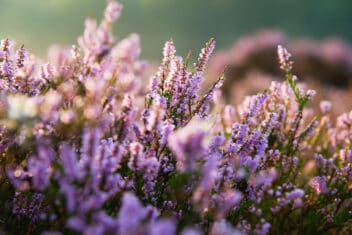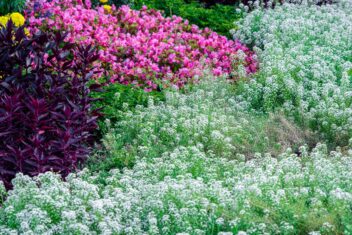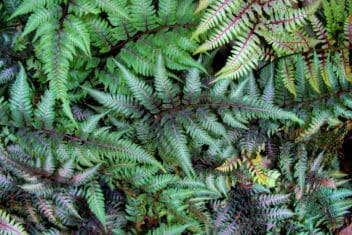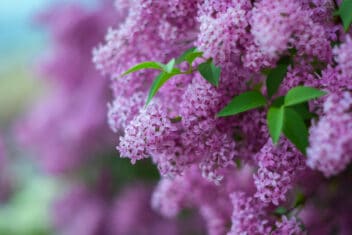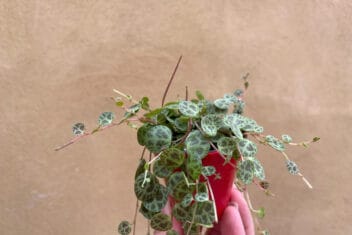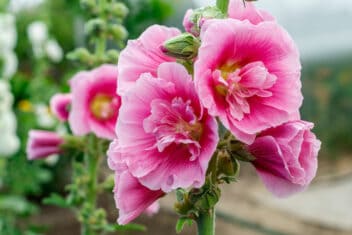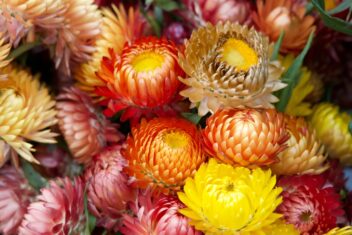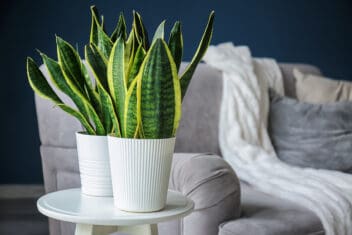Impatiens are some of the most popular garden plants, and it’s no wonder why. They come in a massive range of unique colors, and you can find types that thrive in shade or sun, in the ground, or containers.
Since they grow in shade, you can enjoy their beautiful color in darker areas, which is why they’re so popular. Originally from Africa, they’re adaptable to most climates across the United States.
These colorful flowers are also known as busy Lizzies, touch-me-nots, and jewelweed. They bloom in colors like orange, pink, yellow, white, and violet, or a mixture of colors.
Here is everything you need to growing impatiens:
The Best Varieties of Impatiens
There are two common species of ornamental impatiens, which are common or garden impatiens (Impatiens walleriana ) and New Guinea impatiens (I. hawkeri). However, there are dozens more species that are less common, including I. balsamina and I. capensis.
I. walleriana cultivars and hybrids are more vulnerable to conditions like downy mildew, and thrive in the shade, making them a popular choice.
On the other hand, I. hawkeri are more resistant to mildew, and prefer a bit more sun.
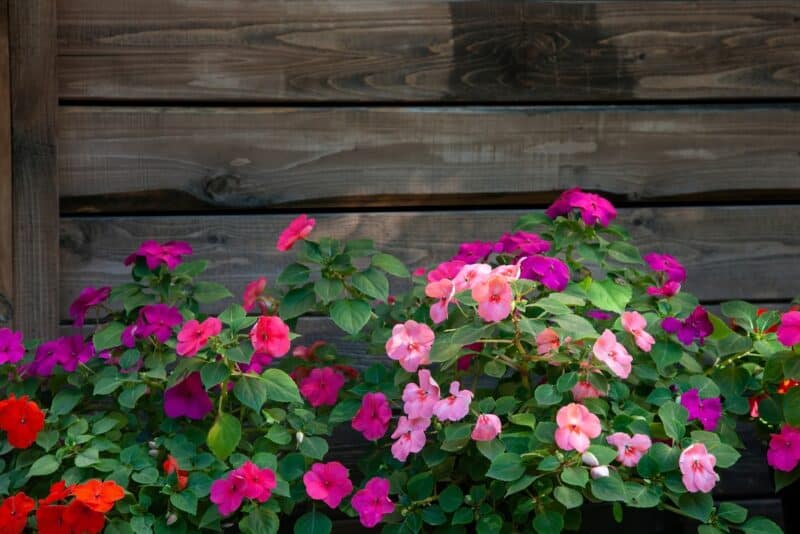
You can also find hybrids of the two. If you have tried growing impatiens in the past and encountered disease problems, these hybrids are a more modern, tougher solution.
Here are some of the best varieties for growing impatiens:
- Imara XDR (I. walleriana ‘Imara XDR’) is one of the few common impatiens resistant to downy mildew.
- Beacon (I. walleriana ‘Beacon’) is resistant to downy mildew with bright colors.
- Sunpatiens (I. x ‘SunPatiens’) grow in full sun.
- Wild Romance series (I. hawkeri) has frilly double blossoms that look more like roses.
- Sunstanding series (I. hawkeri interspecific hybrid) was bred to be incredibly uniform and reliable.
Impatiens will bloom year-round in USDA Hardiness Zones 10-11, but you can grow them as annuals pretty much anywhere in the US. Grow them in hanging baskets, patio containers, or window boxes, or stick them straight into the ground.
Propagating Impatiens Seeds
It’s possible to succeed at growing impatiens by seed. Some people opt to buy young transplants, instead.
Sow the seeds indoors 8-10 weeks before the season’s last frost. These seeds will die in freezing temperatures, so you must do this process inside where it’s warm if you live somewhere that experiences freezes. A heating mat can help improve germination.
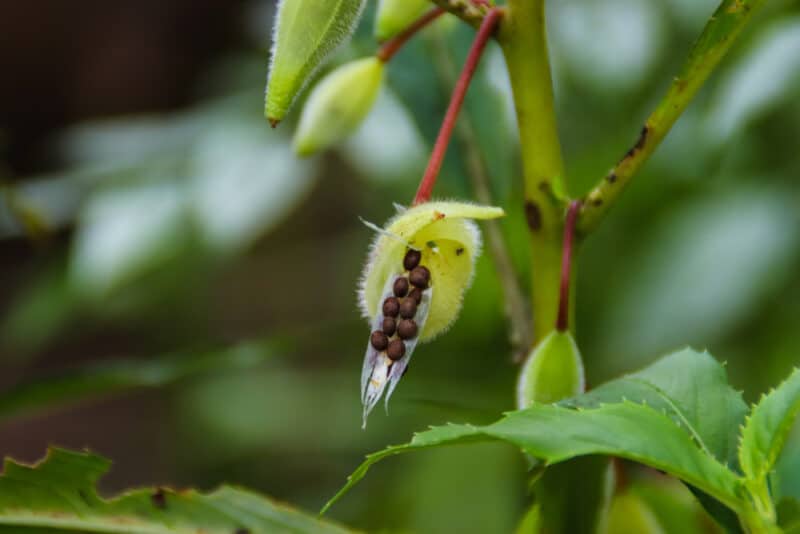
If you already have impatiens, you might be able to collect the seeds from the pods in late summer or fall. Keep in mind , though, that many impatiens are hybrids and won’t grow true or won’t produce seeds at all.
If you have your heart set on a certain type of impatiens, better to buy live plants or certified seeds.
Start new seeds indoors with a seed-starting mix. The seeds can take a few months to go from planting to fully flowering, so plan ahead. Put the seeds in a spot with bright, indirect light and keep the soil moist.
Before planting outside, harden the seeds off for a week.
Caring For Impatiens
Once you have seedlings, whether you grew them or purchased them, decide whether to plant them in a container or the soil. The plant’s needs are the same, but container growing gives you some advantages.
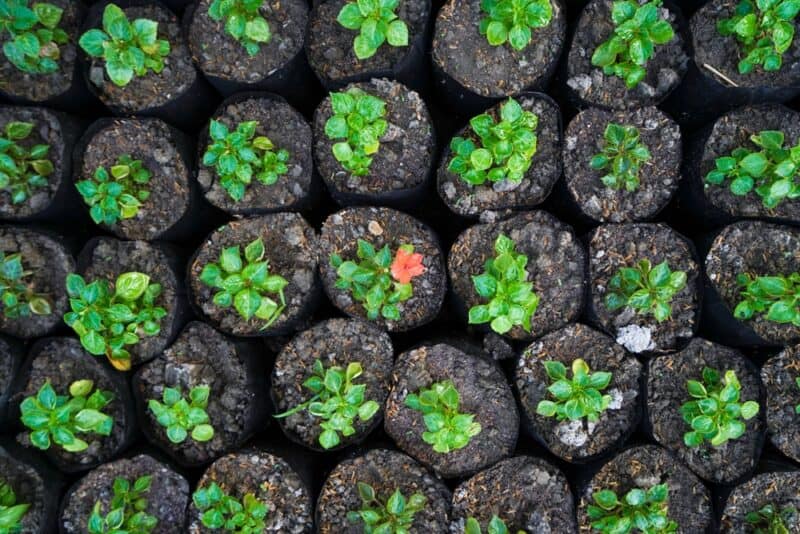
Growing impatiens in a pot allows you to move your flowers to various locations as the weather changes. Getting really hot? Shift the pot to a shadier area. Having a cloudy week? Scoot them into a sunnier spot.
Plus, pots allow you to monitor their progress and protect them from pests and disease.
You’ll need a pot that’s the correct size for the plants. One plant is totally fine in a six-inch container, but multiple plants need something larger, like at least a gallon pot. Whatever size you choose, fill it with water-retentive potting soil.
Impatiens love well-draining soil that is amended with organic material like compost. These flowers prefer a pH range of 6.0-6.5, which means slightly acidic soil. They’re adaptable, though.
Give the seeds well-draining soil. This is non-negotiable. If the soil retains water and stays soggy after watering, it causes root rot.
Watering
After planting the impatiens, water them once a week, depending on where you live, so they have about two inches of water per week. During summer, monitor their progress and increase the watering schedule if the soil gets dry.
The watering is slightly different if you plant impatiens in hanging baskets or small pots. These containers need daily watering, especially in hot weather. One trick is to place the hanging baskets near your door or shed, so you pass them daily and won’t forget.
If you don’t water regularly, the plant can begin wilting, which leaves it open to diseases like mildew. The general rule is that the plant needs water if you can stick your finger in the soil and it’s dry to your first knuckle.
Use organic matter like mulch to help retain moisture. Moisture control is the most challenging aspect of growing impatiens, so set yourself up for success.
Light and Temperature
Impatiens can be planted in full or partial shade, or direct sun, depending on the type. If you have a dark spot that needs some color, impatiens can brighten up the area.
Humidity and heat should be moderate for impatiens. They don’t like heat above 90°F, so you must be careful in the hot weather. A regular watering schedule can prevent wilting, but you might want to invest in some shade cloth.
If you’re growing impatiens in containers, move them somewhere cool and shady during the hot part of the day.
Fertilizer and Pruning
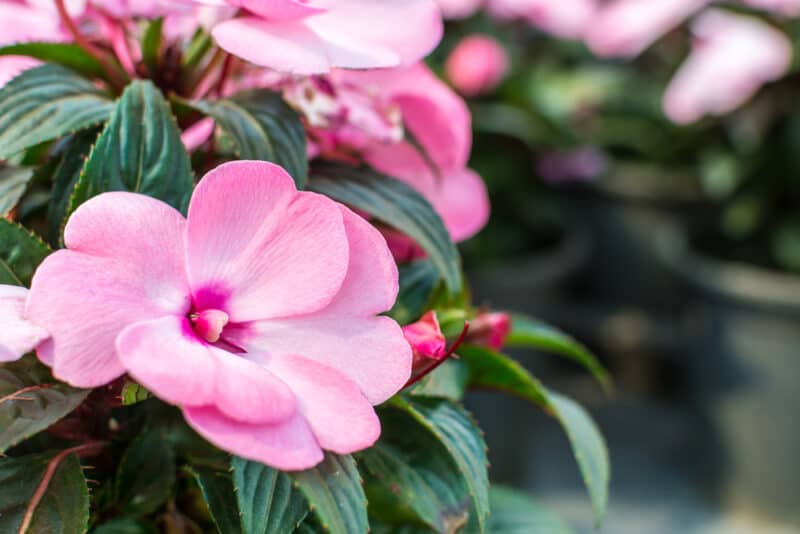
Use a water-soluble fertilizer every two weeks in spring or summer, or apply a slow-release fertilizer in the summer. Always read the label on the product when using fertilizer.
When impatiens have been blooming for a while, they tend to become leggy. Grab your garden scissors and trim the top third of the plant if they start looking overgrown. Not only does this keep your impatiens compact, but it also promotes new, bushy growth.
Pests and Diseases
We mentioned downy mildew as the most devastating problem when growing impatiens, but other pests and diseases might attack. Watch for spider mites, aphids, and mealybugs.
Aphids
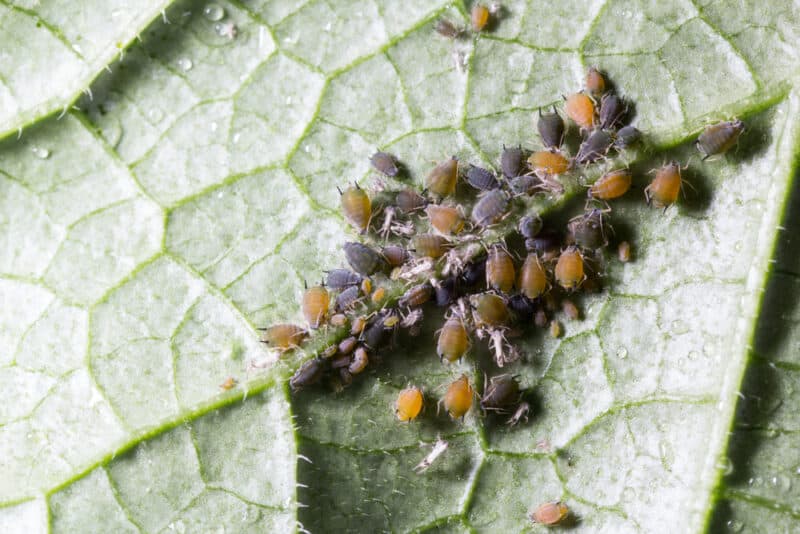
Aphids are easy to identify by the sticky residue they leave behind. They’re small, so you must be vigilant when observing the plants, but the honeydew they leave behind is obvious. To avoid spraying chemicals, plant mint, fennel, or dandelion.
These plants attract natural predators like ladybugs and lacewings, which remove aphids for you. But, if natural methods don’t work, try an organic pesticide such as Bonide’s Insecticidal Soap, available at Amazon.
Mealybugs
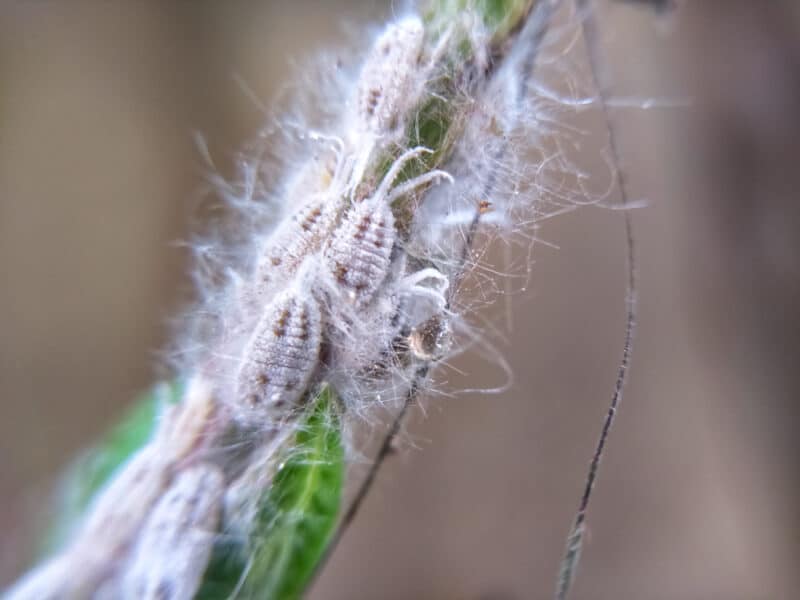
The main sign of mealybugs is a white cottony substance on your plants. This substance resembles cotton, but if you look closely, you’ll realize that it’s actually the pests themselves. They have a waxy, cotton-like protective coating.
The most common areas for finding mealybugs are on the stems and leaves.
Mealybugs might also leave a sticky honeydew behind, similar to aphids. If you see honeydew on your plants, it’s a sign that you’re facing mealybugs or aphids.
Mealybugs take a different approach because of their protective coating. Visit our guide to figure out how to get rid of them.
Spider Mites
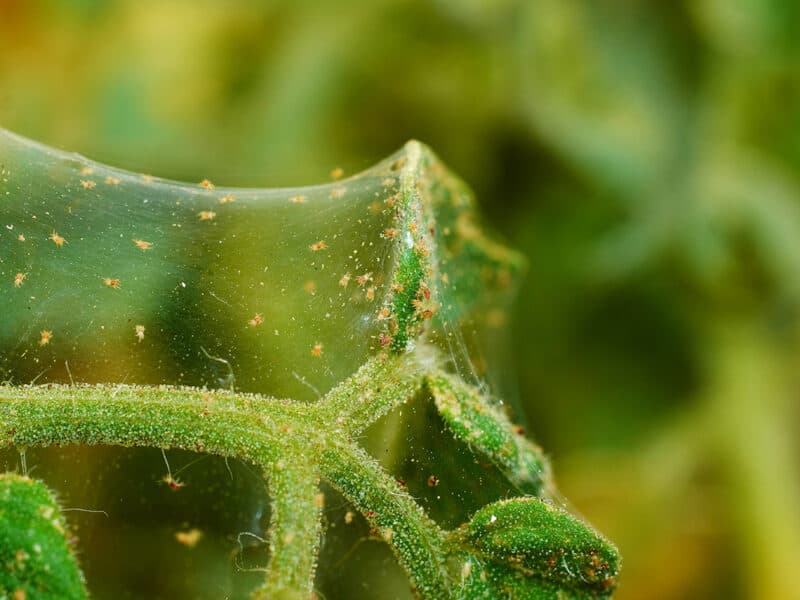
Small yellow or brown spots on the leaves are often symptoms of spider mites. These pests love eating impatiens, so you should know the signs of an infestation.
Spider mites are small, which makes it difficult to spot them on your small impatiens. Shake the leaves and place a piece of paper under the petals. This is an excellent way to catch the spider mites so you can check if it’s these pests or another problem.
You might also see fine webbing all over the plants, stunted growth, or dropping flowers.
To treat spider mites, use neem oil or a miticide. They’re often resistant to pesticides, so using natural methods rather than a broad-spectrum pesticide is better. Visit our guide to learn more.
Downy Mildew
Downy mildew is a fungal disease that commonly infects impatiens. It has caused untold damage and has made many people abandon growing impatiens.
It starts by attacking the foliage. Look out for discolored patches on the leaves that are pale green, yellow, or brown. They can be on either side of the leaf, so remember to turn them over to look for signs.
If you catch the disease early, remove any infected leaves. Don’t water plants in the evening, as this leads to high humidity and allows the disease to spread.
Unfortunately, there are no chemical treatments for this disease. You need to remove your plants if it appears. Be cautious with watering and prune to reduce humidity. With some luck, this will prevent the disease from infecting your plant.
Plant resistant varieties like New Guinea impatiens and their hybrids.

